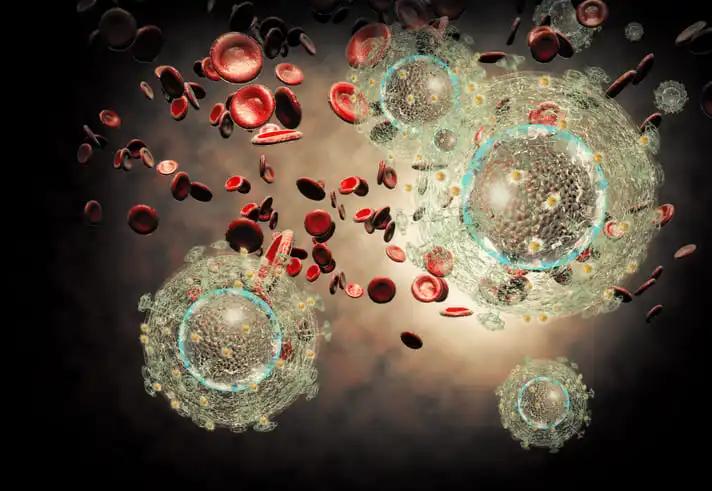KEY TAKEAWAYS
- The trial evaluated the impact of TULSA in men diagnosed with low to medium-risk PCa.
- The study confirmed that TULSA showed effective disease control for up to four years, improved quality of life, and a favorable safety profile post-whole-gland ablation.
Magnetic resonance imaging-guided transurethral ultrasound ablation (TULSA) of the prostate is an in-depth procedure that uses thermal coagulation of tissue while constantly monitoring through MRI. This allows for precise adjustments during treatment to match tissue responses. This study presented the 4-year results from the TACT primary study of TULSA in men diagnosed with low to medium-risk prostate cancer (PCa).
In 13 locations spanning 5 countries, 115 men with localized prostate cancer (PCa) received a singular TULSA treatment that excluded the prostatic urethra and urinary sphincter. The qualifying criteria were stage≤T2b, PSA≤15 ng/mL, and Grade Group (GG)1-2. One-year endpoints were adverse event assessment, quality-of-life (QOL) measures, PSA level changes, histologic controls through a 10-core biopsy, and prostate volume reduction on mpMRI. Patients will be observed for up to five years to monitor adverse events, QOL, PSA levels, and the rate of salvage treatment.
At the beginning of the study, the median age and PSA of the participants were 65 years old (with an interquartile range of 59-69) and 6.3 ng/mL (with an interquartile range of 4.6-7.9), respectively. Among the 115 men who participated in the study, 72 (or 63%) had Grade Group (GG) ≥2 disease, with 60% having GG2 and the remaining 3% having GG3 due to protocol deviation. The median ablation time was 51 minutes (with an interquartile range of 39-66), and the median prostate volume decreased from 37.3 cc to 2.8 cc (92%). At the 1-year biopsy, the majority of patients (85%) were found to be free of ≥GG2 disease, while 79% were free of GG2 or high-volume GG1 disease. Additionally, 14% of patients had low-volume GG1 disease. By the 4-year mark, 16% of patients required salvage treatment, which included radical prostatectomy, radiation therapy, androgen deprivation therapy, or a combination of surgery and radiation. Fortunately, there were no unexpected complications associated with these treatments.
At 4 years, patients experienced a significant reduction in median PSA levels (0.9 ng/mL) compared to baseline, with an 86% reduction (75%-95%) overall and a 96% reduction to the nadir (for the 76 patients analyzed). The median IPSS decreased from 7 at the beginning of the study to 5 at 4 years (n=73). In terms of erectile function, 75% of participants (69/92) had recovered erections sufficient for penetration (IIEFQ2≥2) at 1 year, and 81% (46/57) had recovered at 4 years. Participants also experienced high rates of pad-free urinary continence preservation, with 92% (102/111) and 94% (68/72) maintaining this at 1 and 4 years, respectively. Social continence was also preserved in 99% (110/111) and 99% (71/72) of participants at 1 and 4 years, respectively. No rectal injury or Grade≥4 adverse event was reported. However, Grade 3 adverse events were reported in 8% of participants (9 men), which included GU infection, retention, pain, urinoma, and stricture. All of these events were resolved before the 1-year mark.
TULSA showed effective disease control for up to four years, consistent life quality improvement, and a favorable safety profile post-whole-gland ablation.
Source: https://www.auajournals.org/doi/10.1097/JU.0000000000003341.05
Clinical Trial: https://classic.clinicaltrials.gov/ct2/show/NCT02766543
Pavlovich, Christian; Eggener, Scott; Koch, Michael; Penson, David; Relle, James; Raman, Steven; Lotan, Yair; Futterer, Jurgen; Hatiboglu, Gencay; Serrallach, Marc; Heidenreich, Axel; Oto, Aytekin; Haider, Masoom; Sedelaar, J.P. Michiel; Tirkes, Temel; Arora, Sandeep; Macura, Katarzyna; Costa, Daniel; Pantuck, Allan; Bomers, Joyce; Bonekamp, David; Persigehl, Thorsten; Clarke, Gina; Staruch, Robert; Chin, Joseph; Klotz, Laurence MP73-05 PIVOTAL STUDY OF MRI-GUIDED TRANSURETHRAL ULTRASOUND ABLATION (TULSA) OF LOCALIZED PROSTATE CANCER: 4-YEAR FOLLOW UP, Journal of Urology: April 2023 – Volume 209 – Issue Supplement 4 doi: 10.1097/JU.0000000000003341.05



